In today’s competitive business landscape, effective sales lead management is essential for driving revenue growth and achieving business success. By implementing strategic processes and practices, businesses can identify, qualify, track, and nurture leads effectively, ultimately boosting their sales performance.
In this comprehensive guide, we will delve into the strategies, techniques, and best practices for optimizing your sales lead management efforts.
Importance of Sales Lead Management system
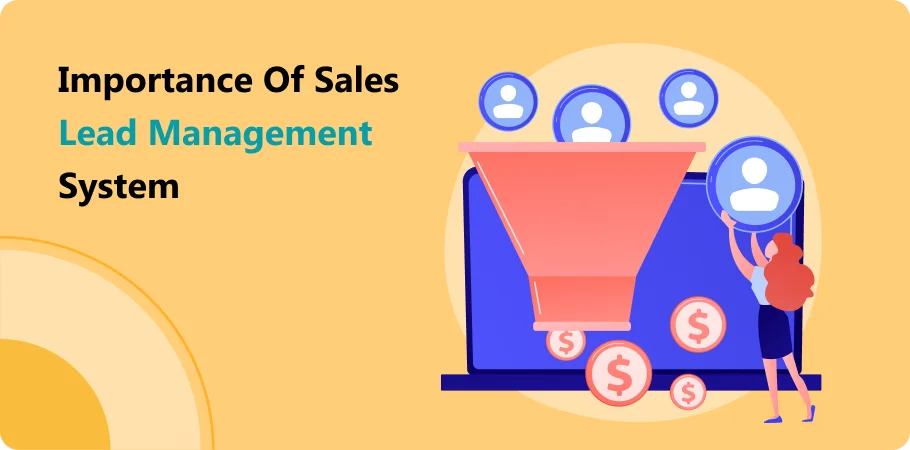
Sales lead management plays a crucial role in the success of any sales organization. It involves the systematic process of identifying potential customers, qualifying them based on their likelihood to purchase, and nurturing them through the sales funnel until they are ready to make a purchase.
By effectively managing leads, businesses can increase their conversion rates, improve sales efficiency, and drive revenue growth.
What is Sales Lead Management?
Sales lead management encompasses a series of strategies, processes, and practices aimed at managing and nurturing leads throughout the sales cycle. It involves various stages, including lead generation, qualification, tracking, nurturing, and conversion.
By adopting a structured approach to lead management strategy, businesses can effectively prioritize their efforts, focus on high-value opportunities, and maximize their sales potential.
How to Build a Strong Foundation?
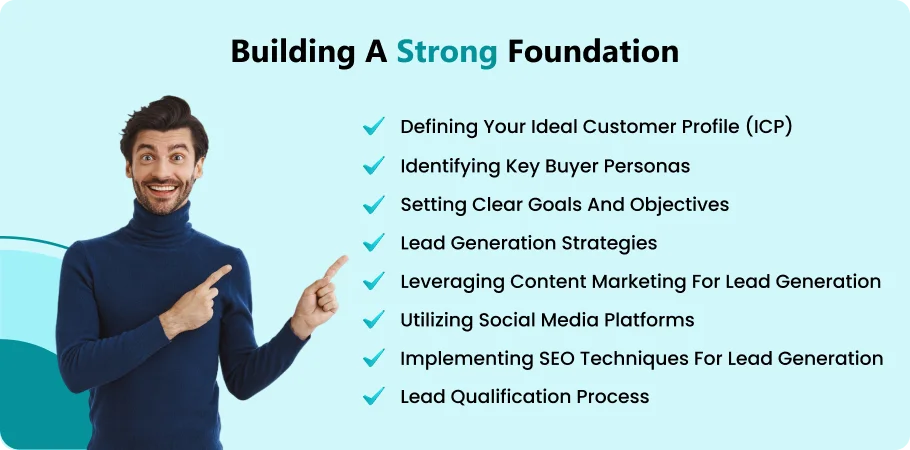
Before diving into the intricacies of sales lead management strategy, it’s essential to establish a strong foundation by defining your ideal customer profile (ICP), identifying key buyer personas, and setting clear goals and objectives.
Ideal Customer Profile (ICP)
Your ideal customer profile (ICP) is a detailed description of the type of customers who are most likely to benefit from your products or services and generate the highest value for your business. To define your ICP, consider factors such as industry, company size, geographic location, job title, pain points, and purchasing behavior.
By understanding your target audience, you can tailor your sales and marketing efforts to resonate with their needs and preferences, ultimately driving better results.
Identifying Key Buyer Personas
In addition to defining your ICP, it’s essential to identify key buyer personas – fictional representations of your ideal customers based on demographic, psychographic, and behavioral characteristics. By creating detailed buyer personas, you can gain insights into the motivations, challenges, and buying triggers of your target audience, allowing you to tailor your messaging, content, and sales strategies accordingly.
Setting Clear Goals and Objectives
To achieve success in sales lead management, it’s crucial to set clear, measurable goals and objectives that align with your overall business objectives. Whether your goal is to increase lead generation, improve lead quality, boost conversion rates, or accelerate sales velocity, having clear objectives will provide direction and focus for your lead management efforts.
Additionally, make sure your goals are specific, measurable, attainable, relevant, and time-bound (SMART) to ensure accountability and track progress effectively.
Lead Generation Strategies
After laying a solid foundation, the subsequent step involves deploying efficient lead generation strategies to allure potential customers and populate your sales pipeline. It’s pivotal to employ tactics that resonate with your target audience and capture their interest effectively.
By implementing these strategies thoughtfully, businesses can ensure a steady influx of leads into their sales conversion funnel, setting the stage for future conversions. This proactive approach lays the groundwork for sustained business growth and success.
Content Marketing for Lead Generation
Content marketing is a powerful strategy for attracting and engaging potential customers by providing valuable, relevant, and informative content that addresses their needs and interests. Whether it’s blog posts, whitepapers, eBooks, case studies, videos, or infographics, creating high-quality content can help establish your brand as a thought leader in your industry, drive organic traffic to your website, and generate leads through gated content offers and lead magnets.
Use Social Media Platforms
Social media platforms offer a wealth of opportunities for lead generation, allowing businesses to connect with their target audience, build relationships, and promote their products or services effectively.
Whether you’re using LinkedIn for B2B lead generation, Facebook for consumer engagement, or Instagram for visual storytelling, leveraging social media platforms can help you expand your reach, increase brand awareness, and drive qualified leads to your sales conversion funnel.
SEO Techniques for Lead Generation
Search engine optimization (SEO) is essential for ensuring that your website ranks prominently in search engine results pages (SERPs) for relevant keywords and phrases related to your business. By optimizing your website’s content, metadata, and technical elements, you can improve its visibility and attract organic traffic from users actively searching for solutions to their problems.
Additionally, consider investing in content marketing strategies, such as blogging, guest blogging, and link building, to enhance your website’s authority and attract inbound links from reputable sources.
Lead Qualification Process
After acquiring new leads, the subsequent step involves assessing their potential to make a purchase and organizing efforts accordingly. It’s crucial to qualify these new leads meticulously, determining their readiness to buy and prioritizing follow-up actions accordingly. By discerning which new leads are most likely to convert, businesses can allocate resources effectively, maximizing their sales opportunities.
This systematic approach streamlines the sales process, ensuring that efforts are focused on prospects with the highest likelihood of making a purchase.
Use The BANT Criteria

The BANT criteria – Budget, Authority, Need, and Timeline – is a widely used framework for qualifying leads based on their readiness to buy. By evaluating leads against these criteria, sales teams can focus their efforts on high-value opportunities and avoid wasting time on prospects who are unlikely to convert. Here’s a breakdown of each component:
Budget:
In the BANT criteria, “Budget” refers to the financial resources available to the lead for purchasing a product or service.
Authority:
Authority in the BANT criteria refers to whether the lead possesses the decision-making power within their organization to finalize a purchase.
Need:
In the BANT criteria, “Need” refers to whether the lead has a genuine requirement or problem that your product or service can solve.
Timeline:
In the BANT criteria, “Timeline” refers to the lead’s purchasing timeframe and whether it aligns with your sales cycle.
Lead Scoring Models
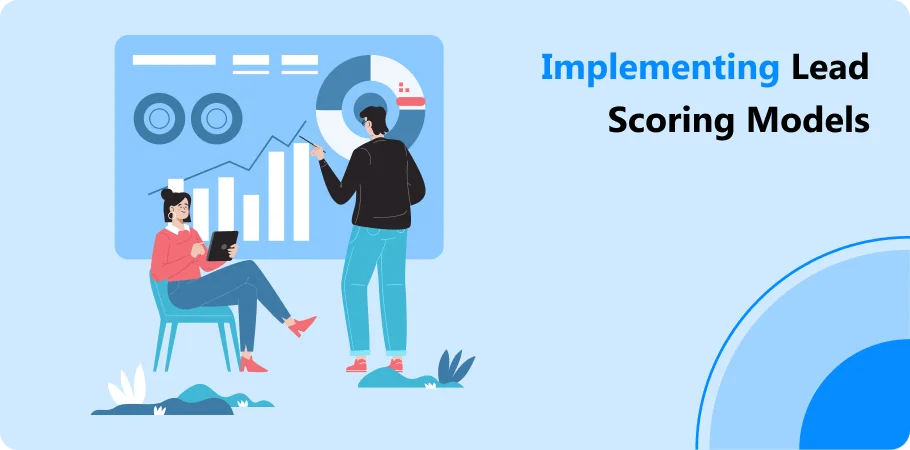
Lead scoring is a technique used to assign a numerical value to leads based on their characteristics, behavior, and engagement with your brand. By scoring leads, businesses can prioritize their follow-up efforts, focus on leads with the highest potential for conversion, and allocate resources more effectively.
When implementing lead scoring models, consider factors such as demographics, firmographics, online behavior, email engagement, and social media interactions to develop a holistic view of each lead’s readiness to buy.
Conducting Lead Qualification Calls
In addition to automated lead scoring models, it’s essential to conduct manual lead qualification calls to gather additional insights, address any questions or objections, and further assess the lead’s suitability for your product or service. During qualification calls, sales reps should focus on building rapport, asking probing questions, and actively listening to the prospect’s needs and concerns.
By qualifying leads effectively, sales teams can ensure that they are investing their time and resources in opportunities with the highest likelihood of success.
Managing Leads
Once leads have been qualified, it’s crucial to manage them effectively to ensure their smooth progression through the sales conversion funnel. Efficient management involves leveraging customer data to tailor strategies that resonate with the unique needs of existing customers. By nurturing relationships with existing customers, businesses can foster loyalty and drive repeat purchases.
This proactive approach not only maximizes conversion rates but also strengthens long-term customer relationships, contributing to sustained business growth.
Implementing a CRM System
A customer relationship management (CRM) system is a central hub for managing and organizing leads, contacts, accounts, and opportunities throughout the sales cycle. By using a CRM system, businesses can track interactions with leads, capture important information, and streamline their sales processes.
Additionally, CRM systems often offer features such as lead scoring, lead assignment, sales pipeline management, and reporting and analytics, enabling businesses to gain valuable insights into their sales performance and make data-driven decisions.
Organizing and Categorizing Leads
To manage sales leads effectively, it’s essential to organize and categorize them based on various criteria, such as lead source, industry, geographic location, buying stage, and lead score. By segmenting leads into different categories, businesses can tailor their marketing messages, sales pitches, and follow-up strategies to suit the unique needs and preferences of each group.
Additionally, organizing leads into lists or groups within your CRM system can help sales teams prioritize their efforts and ensure that no opportunities fall through the cracks.
Streamlining Lead Distribution Processes
In a multi-channel sales environment, it’s essential to have streamlined lead distribution processes in place to ensure that leads are assigned to the appropriate sales reps in a timely manner. Whether you’re using round-robin distribution, territory-based assignment, or lead routing rules, having clear guidelines and automated workflows can help minimize response times, prevent lead duplication, and improve overall sales efficiency.
Additionally, consider implementing lead escalation protocols to ensure that high-priority leads receive prompt attention and follow-up.
Nurturing Leads for Conversion
After leads have been qualified and assigned to the appropriate sales reps, the next step is to nurture them through the sales conversion funnel and guide them towards making a purchase decision. Utilizing lead management software helps streamline this process by providing tools to track interactions and prioritize quality leads.
By leveraging these resources effectively, businesses can foster meaningful relationships with leads, guiding them through the sales process with targeted nurturing efforts. This approach enhances engagement and increases the likelihood of converting leads into loyal customers.
Personalized Lead Nurturing Campaigns
Personalization is key to effective lead nurturing, as it allows businesses to tailor their messaging and content to the specific needs and interests of each lead. Whether you’re sending personalized email drips, targeted social media ads, or customized landing pages, personalization can help you build stronger relationships with leads, keep them engaged throughout the buying process, and increase the likelihood of conversion.
Additionally, consider leveraging dynamic content and marketing automation tools to deliver the right message to the right person at the right time.
Providing Value Through Educational Content
In addition to promotional content, it’s essential to provide value to leads by offering educational and informative content that helps them address their pain points and challenges. Whether it’s how-to guides, best practices, case studies, or industry reports, educational content can position your brand as a trusted advisor and thought leader in your industry, fostering trust and credibility with your target audience.
Additionally, consider offering exclusive content or resources as incentives to encourage leads to take action and move further down the sales funnel.
Book a CrmOne Demo
Experience the CrmOne simplicity and power. Our experts will show you the best ways to use it and answer your questions in real time. See how CRMOne fits your needs.
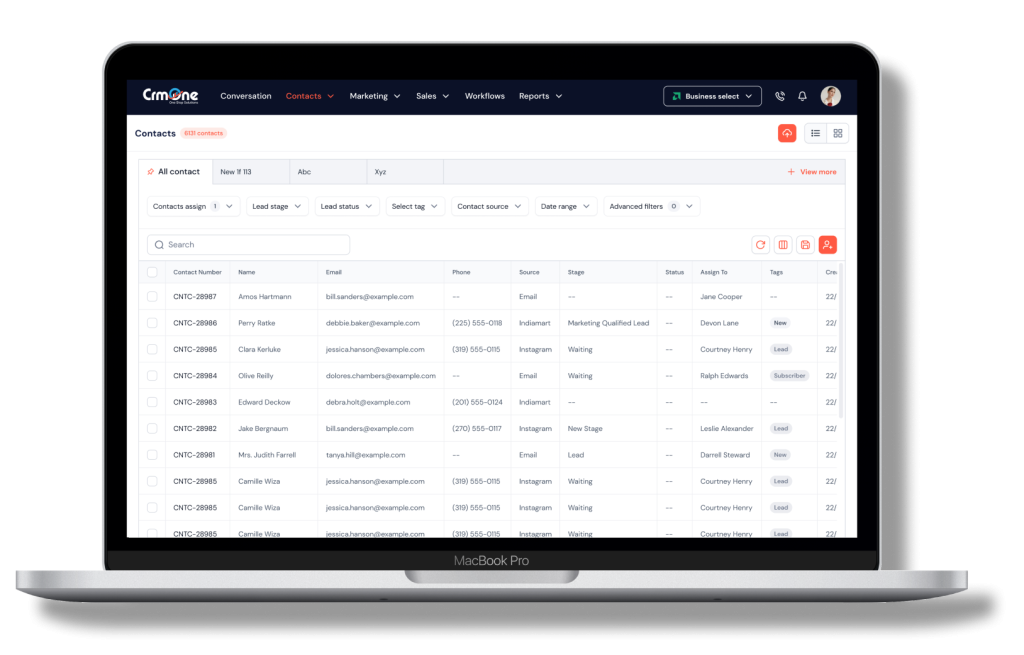
Marketing Automation Tools
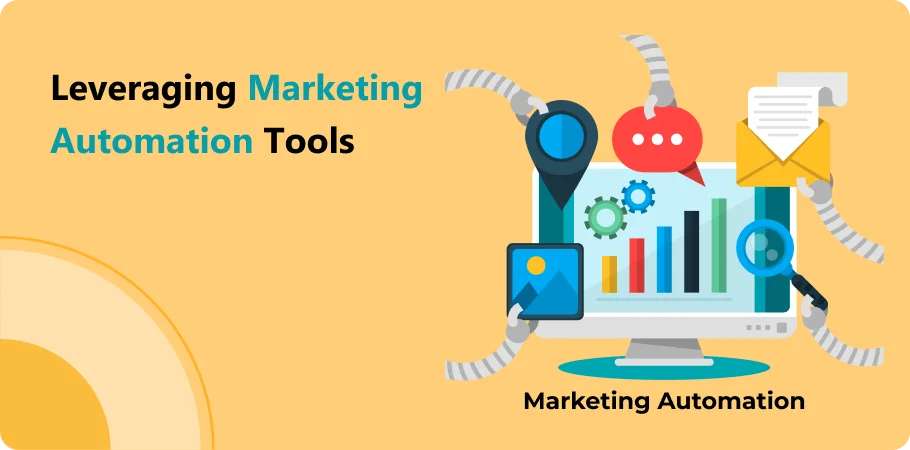
Marketing automation tools play a crucial role in streamlining lead nurturing processes, enabling businesses to deliver personalized, relevant, and timely communications at scale. Whether you’re automating email campaigns, lead scoring, lead segmentation, or lead nurturing workflows, marketing automation tools can help you save time, increase efficiency, and drive better results.
Additionally, by tracking lead engagement and behavior, these tools can provide valuable insights into lead readiness and enable sales team to prioritize their follow-up efforts effectively.
Tracking and Monitoring Lead Progression
To ensure that leads progress smoothly through the sales conversion funnel, it’s essential to track and monitor their progression at every stage of the buyer’s journey. Effective lead tracking allows businesses to gather insights into lead behavior, assess the effectiveness of different lead sources, and optimize their strategies accordingly. By meticulously monitoring lead interactions and engagement, businesses can identify opportunities for improvement and tailor their approach to maximize conversion rates.
Utilizing lead tracking tools empowers businesses to make data-driven decisions and allocate resources effectively, ensuring that leads are guided through the sales process with precision and efficiency.
Setting Up KPIs for Lead Management system
Key performance indicators (KPIs) are metrics used to measure the effectiveness of your lead management efforts and track progress towards your goals. Whether you’re measuring lead generation, lead quality, lead conversion rates, or sales velocity, having clear KPIs in place will provide visibility into your performance and enable you to identify areas for improvement.
Additionally, consider establishing benchmarks and targets for each KPI to set expectations and drive accountability within your sales organization.
Analyzing Lead Conversion Rates
Conversion rate is a critical metric for assessing the effectiveness of your lead management efforts and identifying areas for optimization. By analyzing lead conversion rates at each stage of the sales conversion funnel, businesses can identify bottlenecks, pinpoint areas of improvement, and implement targeted strategies to increase conversion rates.
Additionally, consider segmenting conversion rates by lead source, campaign, or sales rep to gain deeper insights into the factors that influence conversion and optimize your lead management processes accordingly.
Optimizing Lead Management Processes
Lead management is an iterative process that requires ongoing optimization and refinement to adapt to changing market conditions, customer preferences, and business objectives. By continuously monitoring performance, analyzing data, and soliciting feedback from sales teams, businesses can identify opportunities for improvement and implement changes to enhance their lead management processes.
Additionally, consider conducting regular reviews and audits of your lead management workflows to ensure alignment with best practices and industry standards.
Multi-Channel Communication Strategies
In today’s digital age, leads expect personalized and seamless communication across multiple channels, including email, phone, social media, and live chat. By implementing multi-channel communication strategies, businesses can meet the diverse needs and preferences of their target audience, increase engagement, and build stronger relationships with leads.
Additionally, consider integrating communication channels with your CRM system to centralize interactions and provide a consistent experience across all touchpoints.
Providing Exceptional Customer Service
Exceptional customer service is key to building trust, loyalty, and advocacy among leads and customers alike. By providing timely and personalized support throughout the sales process, businesses can differentiate themselves from competitors, address any concerns or objections, and ensure a positive buying experience.
Additionally, consider implementing a customer feedback loop to gather insights into customer satisfaction and identify areas for improvement in your products, services, and processes.
Aligning Sales and Marketing Objectives
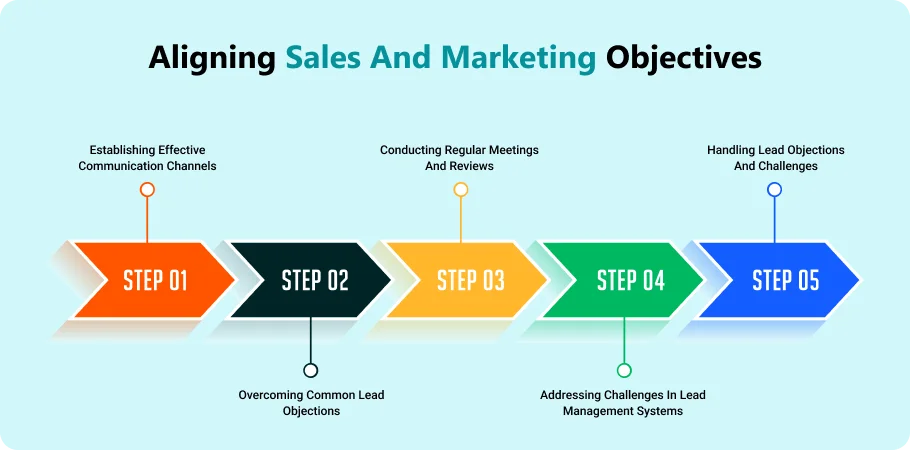
Sales and marketing alignment is critical for ensuring that both teams are working towards the same goals and objectives. By aligning sales and marketing objectives, businesses can improve communication, foster collaboration, and streamline processes throughout the lead management lifecycle.
Additionally, consider implementing shared KPIs and incentives to encourage teamwork and accountability across both departments.
Effective Communication Channels
Open and transparent communication is essential for facilitating collaboration between sales and marketing teams. Whether it’s regular meetings, joint planning sessions, or shared dashboards, establishing effective communication channels will ensure that both teams are informed, aligned, and working towards common goals.
Additionally, consider implementing a CRM system with integrated communication features to facilitate seamless collaboration and information sharing between sales and marketing teams.
Conducting Regular Meetings and Reviews
Regular meetings and reviews provide opportunities for sales teams to discuss progress, share insights, and identify areas for improvement. Whether it’s weekly check-ins, monthly performance reviews, or quarterly planning sessions, scheduling regular meetings will keep both teams accountable and focused on driving results.
Additionally, consider conducting post-mortem analyses of lead management campaigns to identify successes, failures, and lessons learned that can inform future strategies and tactics.
Handling Lead Objections and Challenges
Inevitably, businesses will encounter objections and challenges throughout the lead management process. By understanding common objections and implementing effective strategies for overcoming them, businesses can increase their chances of success and drive better results.
Common Lead Objections
Common lead objections, such as budget constraints, timing issues, or concerns about fit or suitability, can often be addressed through effective communication and problem-solving. By understanding the root cause of objections, acknowledging the prospect’s concerns, and providing relevant information or solutions, sales reps can overcome objections and move the sales process forward.
Additionally, consider providing social proof, such as customer testimonials or case studies, to demonstrate the value and ROI of your products or services.
Challenges in Lead Management systems
In addition to handling individual objections, businesses may encounter broader challenges in their lead management efforts, such as data quality issues, lead leakage, or low conversion rates. By proactively addressing these challenges and implementing corrective measures, businesses can improve the efficiency and effectiveness of their lead management processes.
Additionally, consider leveraging technology solutions, such as data enrichment tools, lead management software, or predictive analytics, to overcome challenges and drive better results.
Conclusion
Effective sales lead management is not just a strategy—it’s a necessity for any business looking to thrive in today’s competitive market. By implementing a robust system, you can streamline your sales processes, ensure no potential customer slips through the cracks, and ultimately boost your sales performance.
CRM software, like CrmOne, can revolutionize your approach to lead management. With features designed to automate and optimize every step of the sales process, CrmOne empowers your team to work smarter, not harder. From capturing and nurturing leads to tracking interactions and closing deals, CrmOne provides the tools and insights needed to turn prospects into loyal customers.
By leveraging CrmOnefor your sales lead management, you can enhance your team’s efficiency, improve customer relationships, and achieve your sales goals with greater precision and speed. Don’t let disorganized lead management hold your business back—embrace the power of CrmOne and watch your sales performance soar.
Get started for Free
Start for free today. Boost your sales by clicking the Get Started button. With CRMOne, you can manage leads, sales, and customer service all in one place.

